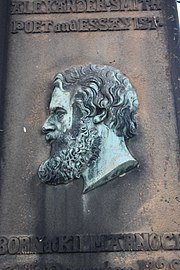Design
Design
Personality
Chart Properties
Your Cross represents the specific theme of your life. This cross embodies your unique potential & the lessons you're here to learn, providing a roadmap to fulfilling your life purpose.
We use the UTC birth time and date to do the calculations required to generate your Human Design chart.
Buy Tokens
Pay as you use, no expiry and no subscription required.Albert Verwey's Biography
Dutch poet, literary historian and essayist.
Verweij was the second child of the cabinetmaker Jan Verweij (24 Jan 1838, A’dam – 7 Dec 1878, A’dam) and Wilhelmina Frederika van der Vijgh (24 Oct 1841, A’dam – 29 Jan 1871, A’dam). They married 13 March 1862 in Amsterdam, got a daughter Anna Maria 24 September 1863 and on 15 May 1865 a son Albert, named after his grandfather Albert van der Vijgh (9 Feb 1808, Amsterdam – 9 July 1893, Amsterdam), who had lost his spouse Margriete Helmig exactly a year before (15 May 1864).
Sadly his sister Anna died 14 May 1866, a day before his first birthday, and 3 months before the birth of his brother Christoffel (16 Aug 1866 – 10 July 1943). In 1867 his sister Margaretha (18 Okt 1867 – 17 Dec 1947 ) was born. On 26 Februari 1870 his sister Wilhelmina Frederika, who died 4 June 1870. On 29 Jan 1871 his mother died at age 29 after a long sick bed of tuberculosis, when Albert was only 5. On 24 Augustus 1871 his father married Gepke Helder in Groningen. On 15 June 1872 a girl was born: Anna Maria. On 4 August 1872 Gepke died in Amsterdam. His aunts and a maid cared for him, whilst his father worked with his carpenters on the ground floor of the Prinsengracht house. He was almost twelve when his father remarried on 12 October 1876 Leentje Hesta (1841-1925), who was a rather moody person, interested in material things, law and order. His father died 1878 also of tuberculosis (“de tering”).
On 1 May 1871, his father brought him to the Protestant Christian School of headmaster Hesta at the Lindengracht. He felt at home at school and was a clever pupil. When he was 13, his father asked him what he wanted to be. It was clear he was not the kind of person to follow his father as a cabinetmaker. The word “telegraphist” fell and he was sent to the HBS. His hobby’s were reading and the lucrative culture of silkworms. He read “De imitatione Christi” of Thomas à Kempis and wrote his first poetry, including a poem “Ruth”. He impressed his fellow students and teachers with his early ripe poems and speeches.
His literary talent was also discovered by his teacher in Dutch letters Dr. Willem Doorenbos (28 May 1820, Deersum- 18 Feb 1906, Den Haag), who was the writer of “Handleiding tot de geschiedenis der letterkunde“ in two parts (1869-1873). Doorenbos contacted him to Frank van der Goes (early Nov 1881) and indirectly to Willem Kloos (Dec 1881), who would become his mentor. In 1884 Verwey, Kloos and others founded the “New Guide” (October 1884-1943) with financial resources of Willem Witsen. Verwey and Kloos broke in 1889, and Verwey left the editorial board of the “De Nieuwe Gids” literary magazine. He was only 24 when his (1st) “Verzamelde gedichten” (collected poems) appeared (1889).
On 5 December 1882 he applied for his first job as a clerk at the offices of Schrikker en Peereboom, securities brokers, that started 12 Dec 1882. Meanwhile he developed his literary skills. Later he changed to the firm of Ziegelaar en van den Bergh, who appreciated his skills in English language and used him as a secretary on trips abroad. On 23 June 1883 12 PM he travelled with the ship “Leerdam” from Amsterdam to New York. During this long journey he learned to appreciate the sea. It was a vacation. But when he arrived in New York, a big and noisy city, he felt depressed and lonely. He wrote 12 July 1883 to his step-mother from a 5th Avenue Hotel: “ik ben zeer depressed of mind; zoo eenzaam; ba, die stad!”. He enjoyed the Niagara-falls and walks in the South Park of Chicago along the Michigan Lake. Next they travelled to Cimarron, New Mexico, to visit the President of the American Board of the Maxwell Land Grant Company, Frank R. Sherwin. As there were no hotels, they stayed in his “Palace of the West”. The Dutch owners wanted to fire him, but he opposed. They succeeded in it in 28 Augustus, but at the cost of large expenses. In September 1883 he had high fever for weeks and feared to die. He was cared for by a Dutchman named Wassenaar Obdam in Springer, NM. End September he was fit enough to travel per train to Chicago. On 25 September 1883 he shipped in New York for a travel to Rotterdam with the “Calland”.
Back in Holland he kept on studying in his spare time. In Oct 1884 he planned an ambitious academic career: “Ik wil eindexamen Gymnasium doen in Juli 1885. Daarna geld zien te leenen of te verdienen voor twee jaar studie teneinde candidaats-examen in de Letteren te doen in het voorjaar 1887. In dienzelfden tijd eenige colleges bijhouden in de Rechten teneinde candid. in de Rechten te doen najaar 1887. Daarna (meerderjarig) door les geven of een leeraarsbetrekking geld genoeg verdienen om najaar 1888 doctoraal te doen in Rechten of Letteren naar omstandigheden. Promotie in een van beide voorjaar of najaar 1889. Uiterlijk nu na vijf jaar, dus op 24-jarigen leeftijd gepromoveerd.”
But being busy with poetry in the evening, and with his daytime job as a secretary, he did no graduate June 1885 by self-study. November 1883, he applied to become a member of the “The Anglo-Dutch Literary and Debating Society” to “the improvement of its members in the English language and literature”, and was accepted 16 December 1883. He only stayed there till 14 May 1884 as he felt the members debated about trivialities. In or before 1884 he became a member of the literary society Flanor and surprised on 13 Jan 1985 the members with his “Versed minutes of the meeting on 16 December 1884”. Here het met Fredrik van Eeden (early 1884) and later Willem Witsen, who would become his brothers-in-law. He wrote reviews of literature in the “Spectator” of Vosmaer and the still existing “Amsterdammer” (Groene Amsterdammer). But many of his now classic articles and poems were refused as too long, too academic or too deep.
On 6 March 1890 he married Kitty van Vloten. The announcement states: “Geen receptie”, so the marriage was sober. They moved to Noordwijk aan Zee, where he would stay till his death. When travelling to Leiden or Amsterdam, he would use the tramcar and train. They got seven children in their house on the top of a dune called Villa Nova. The kids were raised sober, went outside for walks a lot, as the parents tried to harden them and to generate a sense of duty. On 2 March 1892 they got a daughter Mea Verwey, a poet, writer and publisher, who wrote under the name Gerda van Beveren. She studied letters at Leiden and graduated in 1828 with her father a promoter on “De betekenis van Johannes van Vloten”, her grandfather on mothers side.
Together with Lodewijk van Deyssel he started September 1894 the bimonthly “Tijdschrift voor letteren, kunst, wetenschap en politiek op (Journal for literature, art, science and politics), which was in 1902 renamed “De XXe Eeuw” and that fused in 1909 with The New Guide. In 1904 he left “The Twentieth Century” after a conflict with Van Deyssel and started the cultural magazine “De Beweging, algemeen maandschrift voor letteren, kunst, wetenschap en staatkunde.” Other poetical contributors of “The Movement” were Van Eyck, Bloem, Van Vriesland, Nijhoff en Marsman . Groningen University granted him an honorary doctorate in 1914, although he never finished an academic study, as he was an autodidact. He promoted poets like Stefan George (Dünenhaus), and translated Shelley , Hofmannsthal and others in “Poetry in Europe” (1920). Verwey used several penn-names: Homunculus, Alan Lichtenberger, A. de Mare, M. Wenke.
Between 1898 and 1903, he was also in the design of the commodity exchange of Amsterdam of Hendrik Berlage. It was like so many “fin de siecle” buildings a “Gesamtkunstwerk” in which the architect (Berlage) cooperated with poets, painters (Jan Toorop) and many other craftsmen. It is now a protected monument.
From 1924 to 1935 Verwey was a professor at the University of Leiden. He gave lectures, but also permitted his students to speek. He was also a member of the Commission-Marchant, who in the thirties prepared a spelling renewal. His last achievement was a new release of the work of the playwright Joost van den Vondel (1937). Posthumously, a biography of his brother-in-law Frederik van Eeden (Santpoort, 1939) was published.
Albert Verwey died 8 March 1937 in Noordwijk aan Zee.
Link to Wikipedia
Albert Verwey
Your Cross represents the specific theme of your life. This cross embodies your unique potential & the lessons you're here to learn, providing a roadmap to fulfilling your life purpose.
We use the UTC birth time and date to do the calculations required to generate your Human Design chart.
Prompt Ideas
Get inspired with some epic prompt ideas.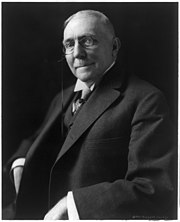

James Whitcomb Riley
5/1 Sacral Manifesting Generator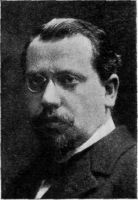

Mordecai Kaplan
4/6 Emotional - Solar Plexus Manifestor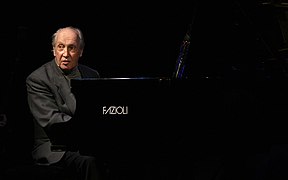

Ernst Stankovski
3/5 Emotional - Solar Plexus Manifesting Generator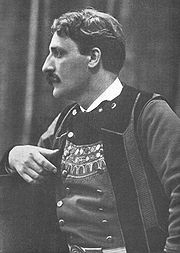

Théodore Botrel
5/1 Emotional - Solar Plexus ManifestorHubert Delarue
6/2 Sacral Generator